It was one of those rosy mornings when I woke up to bright golden sunlight streaming through my airy window. When the world seemed like a dream, I couldn’t help but feel like velvet on cream.
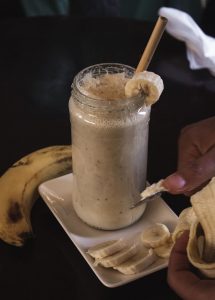 I craved for a banana milkshake instead of the customary tea and toast. The morning was too good to pass up without a delicious morning beverage. So, I geared up to assemble the milkshake ingredients. However, to my dismay, I discovered that the bananas in my fruit basket had blackened till inedible point. That’s when I wracked my head on what could I have done to have salvaged the bananas from a sordid ending.
I craved for a banana milkshake instead of the customary tea and toast. The morning was too good to pass up without a delicious morning beverage. So, I geared up to assemble the milkshake ingredients. However, to my dismay, I discovered that the bananas in my fruit basket had blackened till inedible point. That’s when I wracked my head on what could I have done to have salvaged the bananas from a sordid ending.
I took to the internet to discover banana storage hacks and other food storage hacks as well. I learnt that wrapping the stems of the banana with silver foil – preferably singly – would enable them to stay fresh longer. I’ve also tried using tissue paper in place of silver foil, and this has shown good results as well. Had I known of this hack a few days earlier, I’d have been cheerfully sipping my milkshake by now.
This got me considering revamping my kitchen, and how to store food to increase the shelf life of other supplies as well. I reminisced how my mother would attempt to use every little ingredient in the kitchen to its fullest. I rummaged among my archives for her notes which were written in a beautiful cursive hand. Coupled with hacks from my experiential culinary journey, I had collected a trove of notes on food storage tips.
These aren’t uncommon food storage tips, but I’d like to share their uses nonetheless. Read on, to check how to store food/kitchen supplies for longer periods with the 12 food storage tips listed here.
Decorating with Herbs
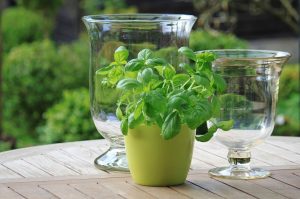 Acquiring herbed ingredients is easy, but storing them until the next trip to the marketplace is easier said than done.
Acquiring herbed ingredients is easy, but storing them until the next trip to the marketplace is easier said than done.
I started with gathering some fresh herbs – mint, cilantro and parsley – and arranging them in glass jars and vases filled with water. They resembled pretty green bouquets except that the herbs bore green hues instead of colourfully floral ones had there been flowers. Its best feature was the aroma that exuded from the herbs, permeating the kitchen air with a fresh vibe that was appealing to the eye as well. There’s nothing as exhilarating as green ambient kitchen décor.
Another way of storing herbs is to separate the leaves from the stalks, wrapping them in a thin, moist cloth. The cloth-wrapped herbs may then be stored in the refrigerator to enable them to stay on longer than if left exposed to moist air.
I found the cloth handling method more convenient over storing them in paper towels. Paper towels do absorb moisture but tend to tear in the process. In any case, do not store the herbs openly in the fridge as they’d turn limp as noodles.
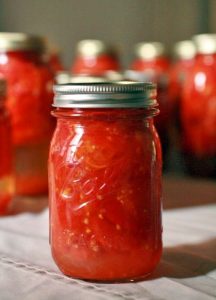
Storing Tomato Puree in Glass Jars
Squeeze Tomatoes into Puree
Fresh produce, unfortunately, comes with an expiry date. Especially in the case of tomatoes, one has to rely on manual inspection to know if they are spoiled. Knowledge of how to store vegetable, especially the likes of the tomato, is necessary. The presence of wrinkles on the skin of tomatoes and also a mushiness are both clear indicators that the tomatoes are well past their prime ripeness.
If you have bought more tomatoes than you bargained for, and they are on the verge of going soft on you, throw them into a blender and make a puree. The puree is sure to last a long time – at least longer in paste form than in whole. Tomato puree is convenient in that it eludes the laborious washing and chopping process. The puree also lends a fresh taste, as fresh as from fresh tomatoes.
Storing tomatoes outside, at room temperature, could work well for a day or two if you want to retain its robust, tangy taste. It stays longer in the confines of a fridge though, but the taste of a refrigerated tomato fruit will often be devoid of its original fresh tang.
Apples should be practising Social Distancing
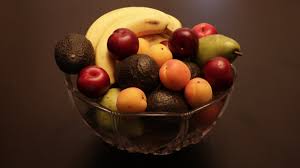
Who doesn’t love a fruit basket sitting in the centre of a kitchen or a dining table? Apples and pears, citruses, tropical bananas, melons and berries form a cheery picture overall.
Fruits form an integral part of our breakfast too, apart from being the centre of attraction. How to store fruits at home is essential as they take longer to consume than vegetables. What I mean is that the consumption rate of say, coriander leaves, green chillies, onions and tomatoes are far higher than the case of fruits. Fruits act as after-meal desserts and only sometimes used in jams or similar. Fruits don’t get expended as fast as their vegetable counterparts. Moreover, fruits often come at a premium price, and the last thing you’d want is to lose them to an absence of proper food storage tips.
Did you know, however, that apples emit ethylene that can trigger instant ripening of fruits placed around it? They can turn raw avocados brown if they are interspersed with the apples. Mangoes or strawberries can ripen faster than necessary if placed alongside apples. Similarly, vegetables and fruits don’t go hand in hand or side by side for the same reason, apart from differing genus alone. How to store fruits at home is, therefore, a hack to learn, if wanting to hasten a ripening process, or to reduce it.
Mangoes can go in the Fridge.
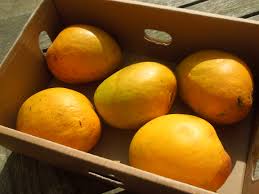 It is no secret that the way to prolong the life of fruits like the mango, stone fruit, and avocado is first to store them at room temperature until they are completely ripe and then transfer them into a fridge tray/shelf.
It is no secret that the way to prolong the life of fruits like the mango, stone fruit, and avocado is first to store them at room temperature until they are completely ripe and then transfer them into a fridge tray/shelf.
A simple way to get more mileage out of perishable fruits is to place paper towels at the bottom of the mango basket when it goes into the fridge. The excess moisture is absorbed by the towels, which can be replaced periodically. How to store fruits like the mango, which is the king of fruits, will have you enjoying the golden fruit longer.
How to Store Bread at Home
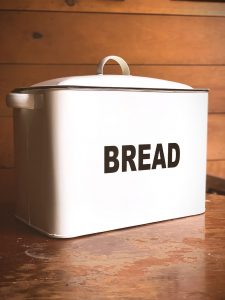 Am sure you know that when a bread packet is opened, its likelihood of staying fresh diminishes. There is a propensity to rely on the fridge to keep it fresh but know that mould can often develop in a moist surrounding.
Am sure you know that when a bread packet is opened, its likelihood of staying fresh diminishes. There is a propensity to rely on the fridge to keep it fresh but know that mould can often develop in a moist surrounding.
It’s essential, therefore to first transfer the bread from its plastic wrapping into a bread box or an assigned bread drawer. Keep it for as long as the expiry date indicates that it should be kept. As bread is used almost daily, how to store bread at home is a tip to note.
As far as butter, its companion is concerned, the reverse is true. Into the fridge goes the butter with its original butter paper wrapping. Storing butter and similar food at home can redeem the purse strings to a large extent. For, saving means spending less. And everyone knows that spending less is a form of passive income.
Going Nuts
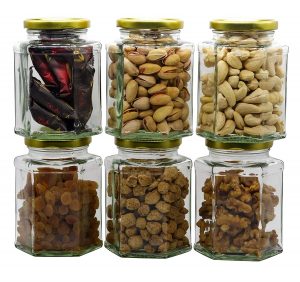 Nuts are soon becoming our staple snack food and also act as add-ons to the likes of upma, sheera, halwa, cakes and such. However, nuts are used in small amounts, hence extending their shelf life is imperative.
Nuts are soon becoming our staple snack food and also act as add-ons to the likes of upma, sheera, halwa, cakes and such. However, nuts are used in small amounts, hence extending their shelf life is imperative.
In the first couple of months, the nuts could enjoy outdoor life in your pantry but will need to be refrigerated for prolonged use. The freezer would be the right spot for storage of nuts if you plan to keep them for as long as a year.
Fancy Mason Jars for the Carrots
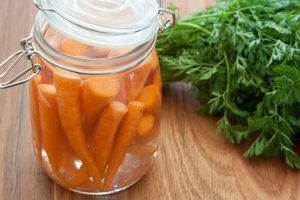 To keep the carrots fresh and crisp longer, they could be dunked in a jar of water and placed on a shelf in the fridge. This method will help store them for a month even, though I’d be happy if they last me just for a fortnight. Why would anyone want to store produce for a fortnight may be a question uppermost in your mind? Carrots are seldom used in carrot vegetable dishes in whole, they are either used in small quantities in fried rice or salads and are often used as accessories in the main dish. Not always used as the primary ingredient except in the case of carrot halwas or perhaps carrot pickles. Hence the carrots in your tray may have to be stored longer than other veggies, particularly if not used for making preserves which may need dozens of them. Other high traffic veggies as beans, cabbage, aubergines and so on are used more frequently than carrots; hence don’t require storage concerns.
To keep the carrots fresh and crisp longer, they could be dunked in a jar of water and placed on a shelf in the fridge. This method will help store them for a month even, though I’d be happy if they last me just for a fortnight. Why would anyone want to store produce for a fortnight may be a question uppermost in your mind? Carrots are seldom used in carrot vegetable dishes in whole, they are either used in small quantities in fried rice or salads and are often used as accessories in the main dish. Not always used as the primary ingredient except in the case of carrot halwas or perhaps carrot pickles. Hence the carrots in your tray may have to be stored longer than other veggies, particularly if not used for making preserves which may need dozens of them. Other high traffic veggies as beans, cabbage, aubergines and so on are used more frequently than carrots; hence don’t require storage concerns.
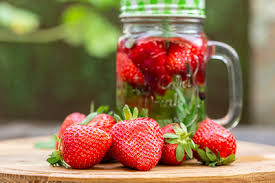 Just because you’re the only one to see it, doesn’t mean that carrots cannot be a pretty sight. I use mason jars to lend them a decorative look. You may use the jars to store berries too, washed of course. Adding a couple of drops of vinegar to the jars will help, before arranging the jars towards the far end of the fridge where it is coldest. This way the jars won’t even come in the way of your high traffic shelves containing your curries and prepared dishes.
Just because you’re the only one to see it, doesn’t mean that carrots cannot be a pretty sight. I use mason jars to lend them a decorative look. You may use the jars to store berries too, washed of course. Adding a couple of drops of vinegar to the jars will help, before arranging the jars towards the far end of the fridge where it is coldest. This way the jars won’t even come in the way of your high traffic shelves containing your curries and prepared dishes.
Memsaab, aapki Swadisht Chai!
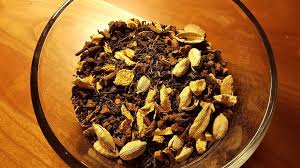 Not always am I in the mood to pound cardamom every time I fix myself a cup of tea. If I happen to be in a mood to go the mortar-pestle way, then I am short on time. On the other hand, if I am relatively free, then I don’t happen to be in the mood to spend my free time in the kitchen. Whatever way you look at it, I discovered that putting a few dried whole cardamoms in my tea leaves jar gave it a flavour that only cardamoms can. The aroma of spice is unmistakable each time I open the jar.
Not always am I in the mood to pound cardamom every time I fix myself a cup of tea. If I happen to be in a mood to go the mortar-pestle way, then I am short on time. On the other hand, if I am relatively free, then I don’t happen to be in the mood to spend my free time in the kitchen. Whatever way you look at it, I discovered that putting a few dried whole cardamoms in my tea leaves jar gave it a flavour that only cardamoms can. The aroma of spice is unmistakable each time I open the jar.
Alternatively, you could pound/ grind a handful of cardamoms into a coarse powder which could be stored separately or sprinkled in the tea jar and shaken well. This changed the way I felt about making flavourful tea, just the way I like it. I even could smell the tea before I savoured it.
How to Store Milk and how to Not store Milk
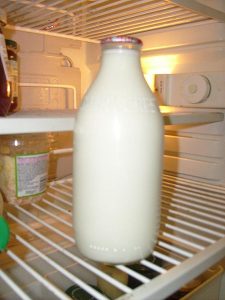 Milk is an essential item in the kitchen, hence how to store milk is a tip that needs to be under your belt.
Milk is an essential item in the kitchen, hence how to store milk is a tip that needs to be under your belt.
If you have been storing your milk in your fridge door, you’ve been doing it wrong. The central part of the fridge is best suited for milk and similar dairy products as door shelves tend to be less cold than the rest of the refrigerator. This occurs because doors are opened often and exposed to the outside temperature.
If you want your dairy products and drinks to remain nice and cold, the door is the last place to store them unless their use is expended within a few days. Using this tip on how to store milk will help you go a long way in keeping it fresh for use in your tea and sweets and savouries even.
Bay Leaf will keep Weevils at Bay
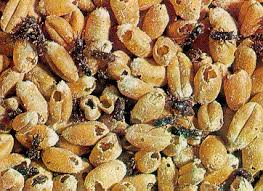 Eww, weevils in your flour! You want to trash the flour swarming with the little beetles. The black moving dots tend to have a considerable appetite too, devouring flours and grains with gusto. How they manage to make their way into the most airtight of containers is a wonder.
Eww, weevils in your flour! You want to trash the flour swarming with the little beetles. The black moving dots tend to have a considerable appetite too, devouring flours and grains with gusto. How they manage to make their way into the most airtight of containers is a wonder.
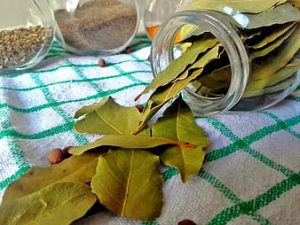 No time to wonder too long, however, as the weevil families come home to roost by the colonies. A way to drive them away is to drop a few bay leaves into flours and grains containers. These leaves will keep the pesky little things out, without having to resort to using artificial insecticides which are more harmful than the weevils themselves. Remember to put in the bay leaves before the onslaught of the weevil war.
No time to wonder too long, however, as the weevil families come home to roost by the colonies. A way to drive them away is to drop a few bay leaves into flours and grains containers. These leaves will keep the pesky little things out, without having to resort to using artificial insecticides which are more harmful than the weevils themselves. Remember to put in the bay leaves before the onslaught of the weevil war.
And here’s another award-winning tip for stubborn weevils who don’t go away, bay leaves or none. Just stash the spice powder box (or grains container) into the freezer for a day and I bet you’ll come away chuckling at having killed your problem 🙂
Upside down Containers to stop Mold formation
This inverted method of storage is especially useful for cottage cheese or sour cream. The tins containing cheese and cream may be kept upside down in the fridge. It is the vacuum inside the tins that will ensure that no mould or bacteria grows on the surface.
Keep those Ice trays Handy.
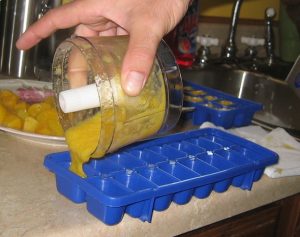 Have a spare set of ice trays handy? Well, get your hands on them and pour your extra gravy, puree, chutney and other pastes into them and freeze. Feel free to use frozen cubes of puree or ginger garlic paste directly into your cooking pot. You may, however, have to thaw them on a fridge shelf a few minutes before using them directly in a hot pan.
Have a spare set of ice trays handy? Well, get your hands on them and pour your extra gravy, puree, chutney and other pastes into them and freeze. Feel free to use frozen cubes of puree or ginger garlic paste directly into your cooking pot. You may, however, have to thaw them on a fridge shelf a few minutes before using them directly in a hot pan.
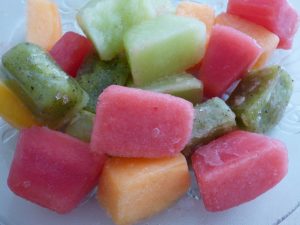 Frozen pastes (both vegetable as well as fruit) taste fresher than in being stored on regular fridge shelves. As for me, I freeze orange and lemon juice in iced form for use in mocktails/cocktails which are a common drink at home.
Frozen pastes (both vegetable as well as fruit) taste fresher than in being stored on regular fridge shelves. As for me, I freeze orange and lemon juice in iced form for use in mocktails/cocktails which are a common drink at home.
Well, these 12 food storage hacks for supplies should keep you busy for a while before another set of advanced hacks makes it to this space. While on the matter of kitchen tips, I’d like to recall the previous Kitchen Hacks article hyperlinked here.
Feel free to share your kitchen experiments from the tips acquired from this site, those that have worked for you. Don’t hesitate to share your smart food storage tips or those that your organised mother passed on to you. My comments section welcomes ideas from the savvy head of the kitchen.
“There’s a place for everything and everything in its place.”


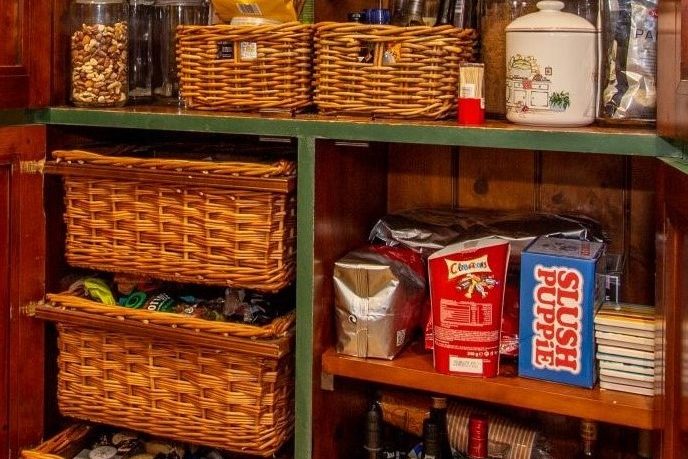
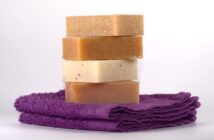

6 Comments
Good to know about the storage of milk. Something I’ve been doing wrong all my life. Great hacks.
It would help especially for you as you store them by the milk vans. Yet in a cold country as New Zealand, milk storage oughtn’t to be a concern.
Invaluable storage tips for every food handler, Carmelita and extremely practical, too. ! ! !
Priya
Am glad you thought so, Priya.
Which tip did you like most?
Makes very interesting read. Leaves the reader wanting to know more.
The banana tip, is something I do in the summer months. The bay leaf test to keep the weevils away works and is an essential part of storing grains, flour and even spice powders in my food pantry. Another recommendation is to freeze your grain, flour or spice powders for at least three days. This helps to kill any weevil larvae. Then store in containers as you normally would, and yes with bay leaves.
I didn’t realise that apples could make other fruit go bad. Does it release ethylene even when stored in the fridge? Would love to know that.
I am guilty of storing milk in fridge door. Manufacturers would do well heeding this tip.
Oh yes, I ought to have mentioned the bit about freezing the spice powders to keep weevil larvae at bay.
I suppose milk storage applies to warmer countries.
Yes, apples can hasten the ripening process – so if your avocado is raw, place it right next to the apples.